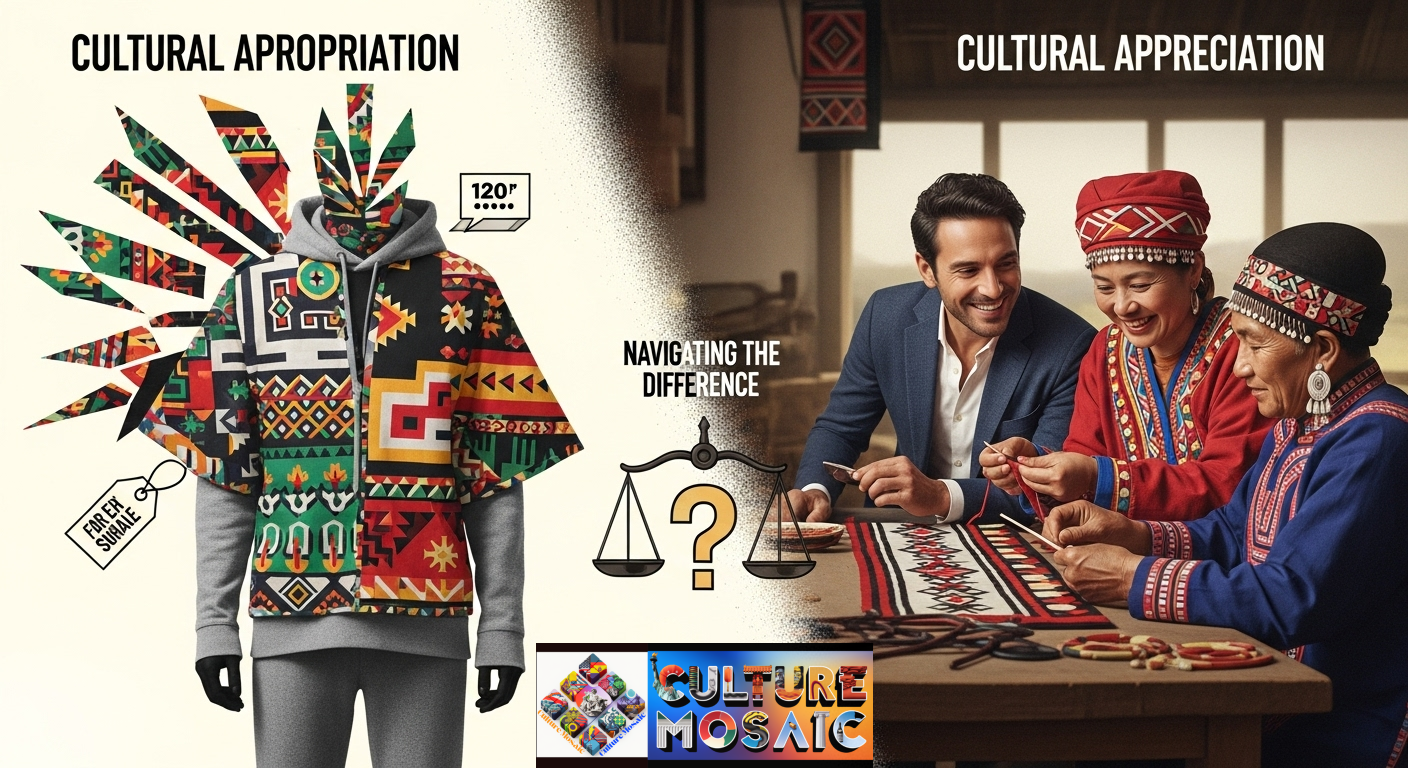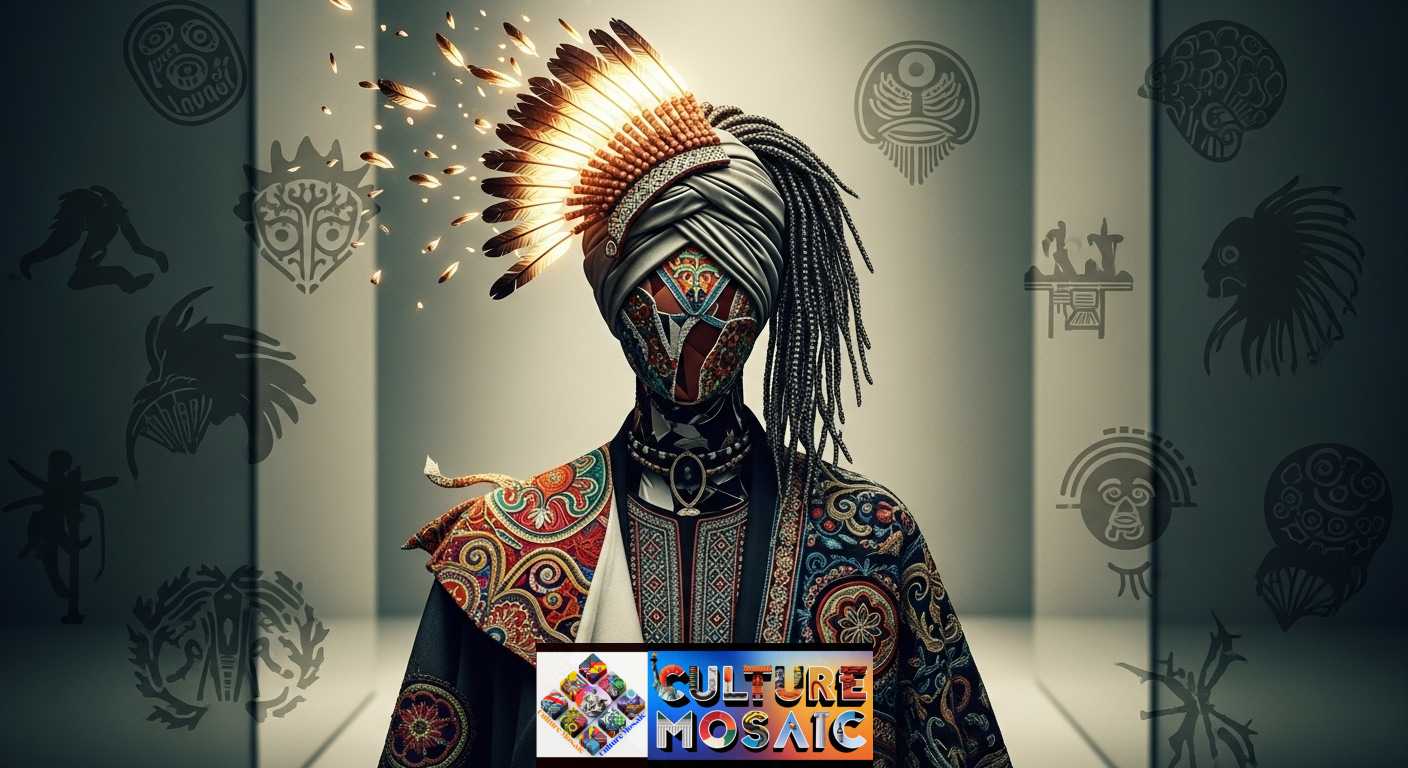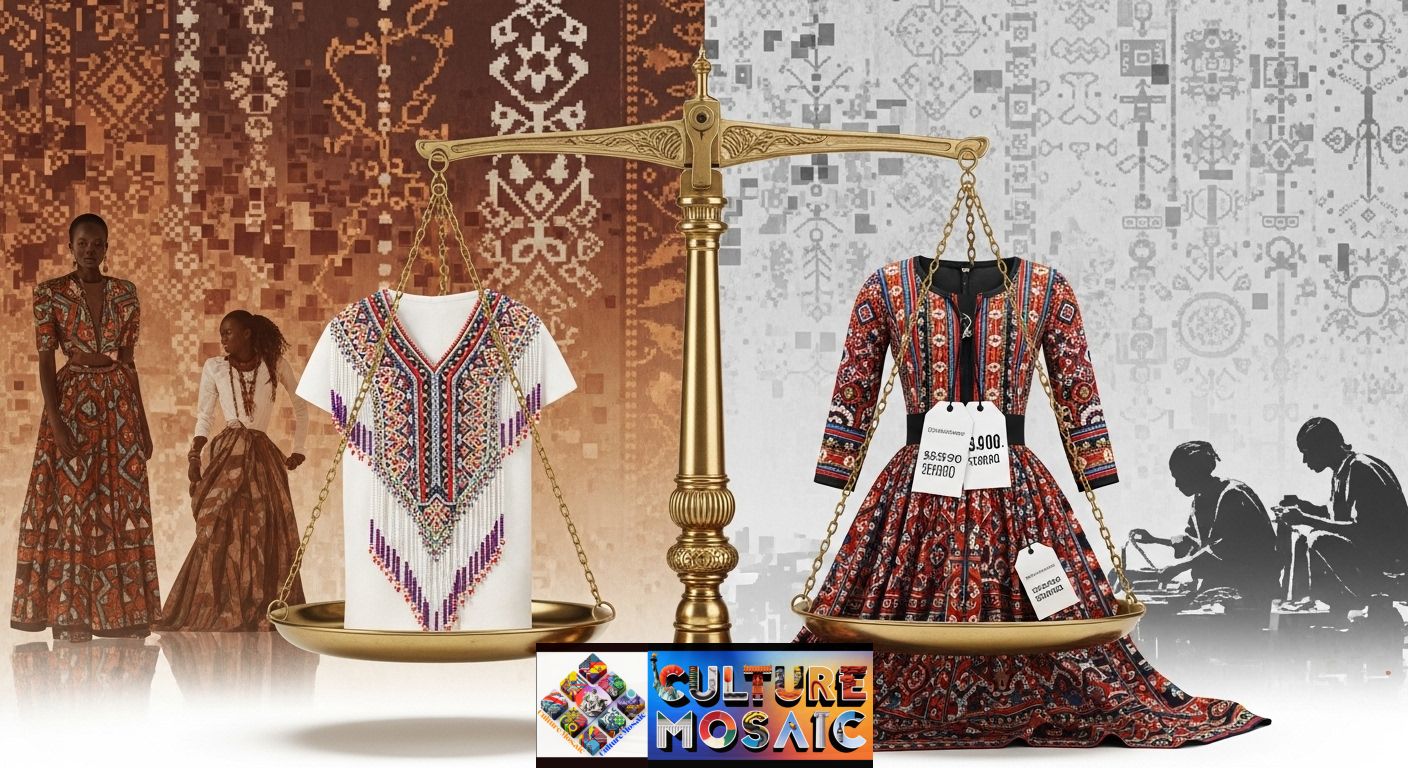The fashion industry has always drawn inspiration from global cultures, but when does homage cross into harmful territory? Cultural appropriation in fashion remains one of the most contentious debates shaping consumer behavior and brand accountability today. As shoppers become increasingly conscious of the ethical dimensions of their purchases, understanding this complex issue isn’t just important—it’s essential.
This comprehensive guide explores cultural appropriation in fashion, examining real-world controversies, celebrating authentic collaboration, and providing actionable steps for making informed purchasing decisions.
What is Cultural Appropriation in Fashion?
Cultural appropriation in fashion occurs when designers, brands, or individuals adopt elements from a marginalized culture—such as traditional patterns, sacred symbols, or distinctive garments—without permission, understanding, or proper attribution, typically for profit or aesthetic appeal.
The key distinction lies in power dynamics. When dominant cultures extract elements from marginalized communities without consent or compensation, it perpetuates historical exploitation patterns. These communities often face discrimination for wearing their own traditional attire, while the fashion industry profits from sanitized, decontextualized versions.
Cultural appropriation in fashion differs fundamentally from cultural exchange, which involves mutual respect, collaboration, and equitable benefit-sharing between cultures.
Cultural Appropriation vs. Cultural Appreciation: Understanding the Difference

Navigating cultural appropriation in fashion requires understanding what separates harmful appropriation from genuine appreciation.
Cultural appropriation typically involves:
- Taking sacred or culturally significant items and using them as mere fashion statements
- Profiting from another culture’s designs without compensating the originating community
- Removing cultural context and meaning from traditional elements
- Perpetuating stereotypes or reducing rich cultures to costumes
- Exhibiting power imbalances where privileged groups face no consequences, while source communities face discrimination
Cultural appreciation, by contrast, includes:
- Collaborating directly with artisans and communities from the culture
- Providing proper attribution and sharing the financial benefits
- Taking time to understand the cultural significance and context
- Amplifying voices from the originating culture rather than speaking over them
- Seeking explicit permission and following cultural protocols
The difference often comes down to three critical questions: Who benefits? Who has power? Who gave consent?
High-Profile Cases: When Cultural Appropriation in Fashion Goes Wrong

Understanding cultural appropriation in fashion becomes clearer when examining real-world controversies that sparked consumer backlash and meaningful conversations.
Victoria’s Secret’s Indigenous Headdress Incident
In 2012, Victoria’s Secret featured model Karlie Kloss wearing a Native American-style headdress during their fashion show. The immediate backlash highlighted how war bonnets hold deep spiritual significance in Plains Indigenous cultures and are earned through acts of bravery. The brand quickly apologized and removed the segment, but the damage illustrated how cultural appropriation in fashion trivializes sacred items.
Marc Jacobs and Faux Locs Controversy
During New York Fashion Week 2016, Marc Jacobs sent predominantly white models down the runway wearing “twisted mini buns” that closely resembled locs—a hairstyle with profound cultural significance in Black communities. Critics pointed out that Black individuals frequently face discrimination for wearing the same hairstyles. Jacobs’ initial defensive response only intensified the controversy, demonstrating how cultural appropriation in fashion often comes with a troubling lack of awareness.
Isabel Marant’s Mexican Embroidery Scandal
French designer Isabel Marant faced accusations of copying traditional Mixe embroidery patterns from Tlahuitoltepec, Mexico, for her 2015 collection without permission or credit. The Mixe community had no legal recourse due to gaps in intellectual property protection for Traditional Cultural Expressions (TCEs). This case exemplified how cultural appropriation in fashion exploits communities lacking legal protection for their ancestral designs.
Gucci’s Indy Full Turban
Gucci’s $790 “Indy Full Turban” in 2018 sparked outrage within Sikh communities, who wear turbans as articles of faith. Marketing a sacred religious item as a trendy fashion accessory represented a particularly egregious form of cultural appropriation in fashion, reducing profound spiritual significance to a luxury commodity.
These controversies share common threads: lack of consultation, absence of compensation, removal of cultural context, and the privileging of profit over respect.
The Economics of Cultural Appropriation in Fashion

Cultural appropriation in fashion isn’t just ethically problematic—it has real economic consequences for marginalized communities.
When major fashion houses appropriate traditional designs, they typically command premium prices while the originating communities see no financial benefit. A designer dress featuring Indigenous beadwork patterns might sell for thousands of dollars, while Indigenous artisans creating authentic pieces struggle to earn livable wages.
This economic exploitation compounds historical injustices. Many communities whose cultural elements are appropriated have faced colonization, displacement, and systematic economic marginalization. When the fashion industry profits from its cultural heritage without reciprocation, it perpetuates these inequities.
The lack of intellectual property protection for Traditional Cultural Expressions (TCEs) leaves indigenous and marginalized communities vulnerable. Unlike copyrights or trademarks, TCEs—encompassing traditional designs, patterns, and techniques passed down through generations—often lack legal recognition, making it nearly impossible for communities to prevent or profit from commercial exploitation.
The Solution: Authentic Global Collaboration in Fashion

Cultural appropriation in fashion isn’t inevitable. Numerous brands and designers demonstrate that authentic, ethical engagement with global cultures creates superior outcomes for everyone involved.
Bethany Yellowtail: Indigenous Design Leadership
Bethany Yellowtail, a designer from the Apsáalooke (Crow) and Northern Cheyenne Nations, creates contemporary fashion rooted in her heritage. Her brand, B.Yellowtail, employs Indigenous artisans and ensures that Native communities benefit economically from their own cultural expressions. This model represents the antithesis of cultural appropriation in fashion—Indigenous-led design that maintains cultural integrity while achieving commercial success.
Koromiko and Māori Collaboration
New Zealand brand Koromiko partners directly with Māori artists, ensuring proper cultural protocols are followed and that artists receive fair compensation. Each design includes the artist’s story and cultural context, educating consumers while honoring Māori heritage. This approach transforms cultural appropriation in fashion into genuine cultural exchange.
Studio 189: West African Partnership Model
Founded by Rosario Dawson and Abrima Erwiah, Studio 189 collaborates with West African artisans, providing fair wages, sustainable employment, and skill development. Rather than extracting designs, the brand builds long-term partnerships that empower artisan communities economically. This model proves that avoiding cultural appropriation in fashion while celebrating global craftsmanship is not only possible but profitable.
Oskar Metsavaht and Amazonian Communities
Brazilian designer Oskar Metsavaht’s brand Osklen has developed formal partnerships with Amazonian indigenous communities, creating benefit-sharing agreements that provide sustainable income while protecting traditional knowledge. These collaborations combat cultural appropriation in fashion by centering indigenous voices and ensuring equitable economic outcomes.
The common denominators in successful collaborations include direct partnership with source communities, transparent benefit-sharing, proper attribution, cultural education, and ongoing relationships rather than one-time extraction.
Traditional Cultural Expressions: The Legal Gap

Understanding cultural appropriation in fashion requires recognizing the legal vulnerabilities facing traditional cultures.
Traditional Cultural Expressions (TCEs) include designs, patterns, symbols, textile techniques, and artistic expressions developed and maintained by indigenous and traditional communities. Unlike Western intellectual property, which protects individual creators for limited periods, TCEs are collectively held, often anonymously, and passed through generations.
Current intellectual property frameworks fail to protect TCEs adequately. Copyright requires identifiable authors and expires after set periods. Trademarks protect brand identifiers but not cultural heritage. Patents demand novelty and non-obviousness, disqualifying traditional knowledge by definition.
This legal gap enables cultural appropriation in fashion to continue with minimal consequences. Designers can legally copy traditional patterns, claim them as original creations, and even trademark them—effectively preventing the originating communities from commercializing their own heritage.
International efforts, including the World Intellectual Property Organization’s work on TCE protection, aim to close these gaps, but progress remains slow. Meanwhile, indigenous and traditional communities continue experiencing cultural appropriation in fashion without legal recourse.
The Role of Social Media in Challenging Cultural Appropriation in Fashion
Social media has fundamentally changed how cultural appropriation in fashion is identified, challenged, and addressed.
Platforms like Instagram, Twitter, and TikTok enable rapid information sharing, allowing marginalized communities to call out appropriation directly. When a brand launches a problematic collection, community members can immediately provide cultural context, share their perspectives, and mobilize collective action.
This democratization of critique has forced brands to respond more quickly and thoughtfully to accusations of cultural appropriation in fashion. The viral nature of social media controversies creates reputational and financial risks that companies cannot ignore.
However, social media conversations about cultural appropriation in fashion aren’t without complexity. Nuanced discussions can devolve into polarized arguments, and the speed of social media sometimes leads to rushed judgments without full context. Still, these platforms have undeniably amplified marginalized voices and increased accountability.
Younger consumers, particularly Gen Z, use social media to research brands’ ethical practices before purchasing. A history of cultural appropriation in fashion can permanently damage a brand’s reputation with this demographically crucial audience.
How Consumers Can Combat Cultural Appropriation in Fashion
Individual purchasing decisions collectively shape industry practices. Conscious consumers can actively combat cultural appropriation in fashion through informed choices.
Research Before You Buy
Investigate brands’ sourcing and collaboration practices. Look for transparency about where designs originate and whether source communities benefit. Brands genuinely avoiding cultural appropriation in fashion typically highlight their ethical partnerships prominently.
Support Indigenous and Marginalized Designers
Purchase directly from designers and artisans from the cultures whose aesthetic you admire. This ensures your money supports the culture-bearers themselves rather than corporations profiting from cultural appropriation in fashion.
Ask Questions
When you see cultural elements in fashion, ask brands about their collaboration practices. Were members of that culture involved in the design process? Do they receive compensation? How is cultural context being respected? Brands avoiding cultural appropriation in fashion should be able to answer these questions clearly.
Understand Cultural Significance
Before wearing items with cultural meaning, research their significance. Some items, like Native American headdresses or Polynesian tā moko patterns, hold sacred meaning and should never be worn by outsiders. Avoiding cultural appropriation in fashion requires cultural education.
Amplify Marginalized Voices
When controversies arise, listen to voices from the affected communities rather than speaking over them. Share their perspectives, support their businesses, and respect their determination of what constitutes cultural appropriation in fashion.
Hold Brands Accountable
When you witness cultural appropriation in fashion, voice your concerns to the brand directly and through social media. Companies respond to consumer pressure, and collective action creates meaningful change.
Value Authentic Craftsmanship
Be willing to pay fair prices for authentic, ethically-made items. Cultural appropriation in fashion thrives partially because fast fashion creates demand for cheap approximations of global designs. Supporting artisans financially enables them to maintain their cultural practices sustainably.
The Future of Cultural Appropriation in Fashion
The conversation around cultural appropriation in fashion continues evolving as awareness increases and accountability mechanisms strengthen.
Educational initiatives are expanding, with fashion schools incorporating cultural sensitivity and ethical sourcing into curricula. Future designers will enter the industry better equipped to avoid cultural appropriation in fashion and engage respectfully with global cultures.
Technology may offer solutions to some challenges. Blockchain and digital authentication could help trace cultural designs to their origins, ensuring proper attribution and compensation. These tools might address some economic injustices inherent in cultural appropriation in fashion.
Consumer activism shows no signs of diminishing. As younger generations prioritize ethical consumption, brands face increasing pressure to demonstrate genuine cultural collaboration rather than appropriation. Cultural appropriation in fashion will likely carry even greater reputational and financial costs in the coming years.
Legal frameworks may eventually catch up, providing stronger protections for Traditional Cultural Expressions. International agreements and national legislation could give communities legal tools to combat cultural appropriation in fashion.
Ultimately, addressing cultural appropriation in fashion requires systemic change: legal reform protecting traditional knowledge, industry standards prioritizing ethical collaboration, consumer education fostering informed purchasing, and power redistribution centering marginalized communities in conversations about their own cultures.
The goal isn’t to eliminate cross-cultural influence—fashion has always been global. Rather, it’s to ensure that influence flows through channels of respect, consent, and equity rather than exploitation.
Conclusion: Wearing Your Values
Cultural appropriation in fashion represents more than aesthetic disputes—it reflects deeper questions about power, respect, and justice in our globalized world. Every purchase is a vote for the kind of fashion industry we want to create.
By educating ourselves, supporting ethical brands, amplifying marginalized voices, and demanding accountability, we can push the fashion industry toward genuine cultural appreciation and away from exploitative appropriation. The line between inspiration and appropriation isn’t always clear, but approaching it with humility, willingness to listen, and commitment to equity points us in the right direction.
Fashion should celebrate our global diversity while respecting the communities whose cultural heritage enriches our world. That’s not just ethical—it’s the future of fashion.
Frequently Asked Questions About Cultural Appropriation in Fashion
1. Is it ever okay to wear clothing from another culture?
Context matters significantly. Wearing traditional clothing when invited to cultural celebrations, purchasing directly from artisans of that culture, or wearing items without sacred significance—with understanding and respect—generally constitutes appreciation rather than appropriation. Avoid wearing sacred or ceremonial items, costumes that stereotype cultures, or items when the originating culture faces discrimination for wearing the same thing.
2. How can I tell if a brand is engaging in cultural appropriation in fashion?
Look for warning signs: lack of attribution to source cultures, absence of collaboration with community members, sacred symbols used decoratively, exorbitant pricing without benefit-sharing, and marketing that exoticizes or stereotypes cultures. Ethical brands typically provide transparent information about cultural collaborations, proper attribution, and how communities benefit.
3. Aren’t all fashion trends based on borrowing from different cultures?
Cultural exchange differs from cultural appropriation. Exchange involves mutual respect, permission, and benefit-sharing between equals. Appropriation involves power imbalances, a lack of consent, and one-way extraction where dominant groups profit from marginalized cultures’ heritage. The question isn’t whether cultures influence each other—they always have—but whether that influence respects and benefits all parties involved.
4. What should I do if I already own something that might be culturally appropriative?
Use it as a learning opportunity. Research the item’s cultural significance and decide whether it’s appropriate to continue wearing it. If it holds sacred meaning or you realize it represents problematic appropriation, consider donating it or respectfully disposing of it. Going forward, apply your new understanding to future purchases and share what you’ve learned with others.
5. Can people from marginalized cultures also commit cultural appropriation in fashion?
While individuals from any background can be disrespectful toward other cultures, cultural appropriation specifically involves power dynamics where dominant groups exploit marginalized ones. A person from one marginalized culture wearing elements from another marginalized culture without permission may be disrespectful, but the systemic impact differs from dominant culture appropriation, which reinforces existing power imbalances and often involves significant economic exploitation.

